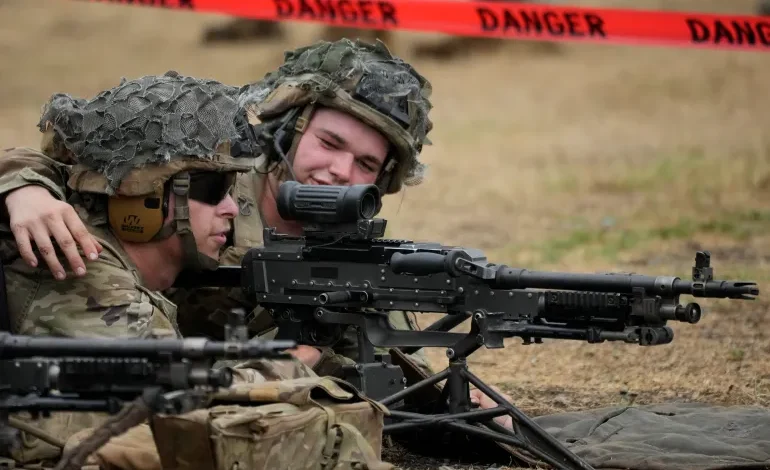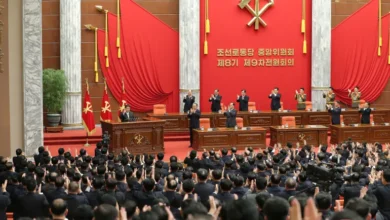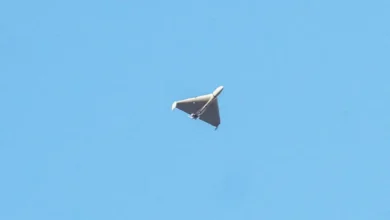In bid to counter China, US ramps up effort to boost military ties in Asia

On May 30, the United States accused China of intercepting one of its spy planes in an “unnecessarily aggressive manoeuvre” over the South China Sea. The American RC-135 plane, according to the US military, was conducting routine operations over the sensitive waterway when a Chinese fighter jet flew directly in front of its nose.
A video shared by the US Indo-Pacific Command showed the cockpit of the RC-135 shaking in the wake of turbulence of the Chinese jet.
Days later, on June 5, the US again accused China of carrying out what it said was an “unsafe” manoeuvre near one of its vessels. This time it was around a warship in the Taiwan Strait. The US Indo-Pacific Command again released a video of the incident, showing a Chinese vessel cutting sharply across the path of a US destroyer at a distance of some 137 metres (150 yards), forcing the latter to slow down to avoid a collision.
Washington said the near misses showed China’s “growing aggressiveness”, but Beijing said the US was to blame, accusing its rival of deliberately “provoking risk” by sending aircraft and vessels for “close in reconnaissance” near its shores – moves it said posed a serious danger to its national security.
The close calls evoked memories of a deadly incident on April 1, 2001, when a Chinese fighter jet and a US surveillance plane collided in the sky over the South China Sea. The impact caused the Chinese jet to crash and killed the pilot, while the US plane was forced to make an emergency landing in China’s Hainan. Beijing held the 24 American aircrew members for 11 days and only released them when Washington apologised for the incident.
While the two countries were able to de-escalate tensions then, there are worries that a similar mishap today could widen into a bigger conflict due to the deterioration in relations between the superpowers.The US views China as the biggest challenge to the Western-dominated international order, pointing to Beijing’s rapid military buildup – the biggest in peacetime history – as well as its claims over the self-governed island of Taiwan and in the East and South China Seas. The US military’s so-called “freedom of navigation exercises” in the contested waterways near China are part of a push by the administration of President Joe Biden to deepen and expand its diplomatic and military presence in the Asia Pacific.
The campaign – which has accelerated over the past year – stretches from Japan to the Philippines and Australia, and from India to Papua New Guinea and the Solomon Islands. The “once in a generation effort,” as Gregory Poling, director of the Southeast Asia Program at the Center for Strategic and International Studies, puts it, involves the opening of new embassies in the region, deployment of troops and more advanced military assets, as well as obtaining access to sites in key areas facing the South China Sea and the Taiwan Strait.
For its part, China accuses the US of pursuing a policy of “containment, encirclement and suppression”, all aimed at holding back its economic development. And its leaders have pledged to resist.
Chinese President Xi Jinping said the US campaign has “brought unprecedented severe challenges to our country’s development”, and in a speech in March called on his countrymen to “dare to fight”. His former Defence Minister Li Shangfu, during an address at the Shangri-La Dialogue in Singapore, condemned what he called Washington’s “Cold War mentality”, and said Beijing would not be intimidated and would “resolutely safeguard national sovereignty and territorial integrity, regardless of any cost”.
Analysts say tensions will only heighten further as competition between China and the US – a contest about who gets to set the rules on the global stage – intensifies. While the superpower rivalry could bring benefits to countries in the Asia Pacific in the short term – particularly in the form of infrastructure loans and foreign direct investments – these nations could, in the future, find having to navigate between China and the US more challenging.
“This is a competition over what the rules-based order looks like, at least in Asia,” Poling told Al Jazeera. “It’s about whether or not the existing global rules continue to apply to Asia or whether China gets to carve out a huge area of exemption in which its preferred rules predominate.
“Clearly, the next couple of decades at least are going to be characterised by this growing competition. Unless China changes its strategy on this … then we’re going to see competition continue to heighten and tensions continue to heighten not just between the US and China, but also between China and most of its neighbours.”
China’s rise
Japan’s defeat in World War II ushered in an age of US dominance in Asia. But China’s growing military and economic might in recent decades has brought an end to that uncontested primacy.
Under Xi, who took office in 2012 championing what he calls the “Chinese dream of national rejuvenation”, a vision to restore China’s great-power status, Beijing has invested heavily in modernising its military. According to the International Institute for Strategic Studies, a London-based think tank, China has more than doubled its military spending over the past decade, with expenditure reaching $219bn in 2022 – although this is still less than a third of US spending during the same year.
China has embarked on a naval shipbuilding programme that has put more vessels to sea between 2014 and 2018 than the total number of ships in the German, Indian, Spanish and British navies combined. The People’s Liberation Army (PLA) has since also commissioned guided missile cruisers as well as nuclear-powered ballistic missile submarines. In June 2022, it launched its third aircraft carrier, the Fujian. The PLA’s rocket force has also modernised its capabilities, including with the development of hypersonic missiles and anti-ship ballistic missiles. According to the US military, the PLA also plans to accelerate the expansion of its nuclear arsenal to as many as 700 nuclear warheads by 2027 and at least 1,000 by 2030.










